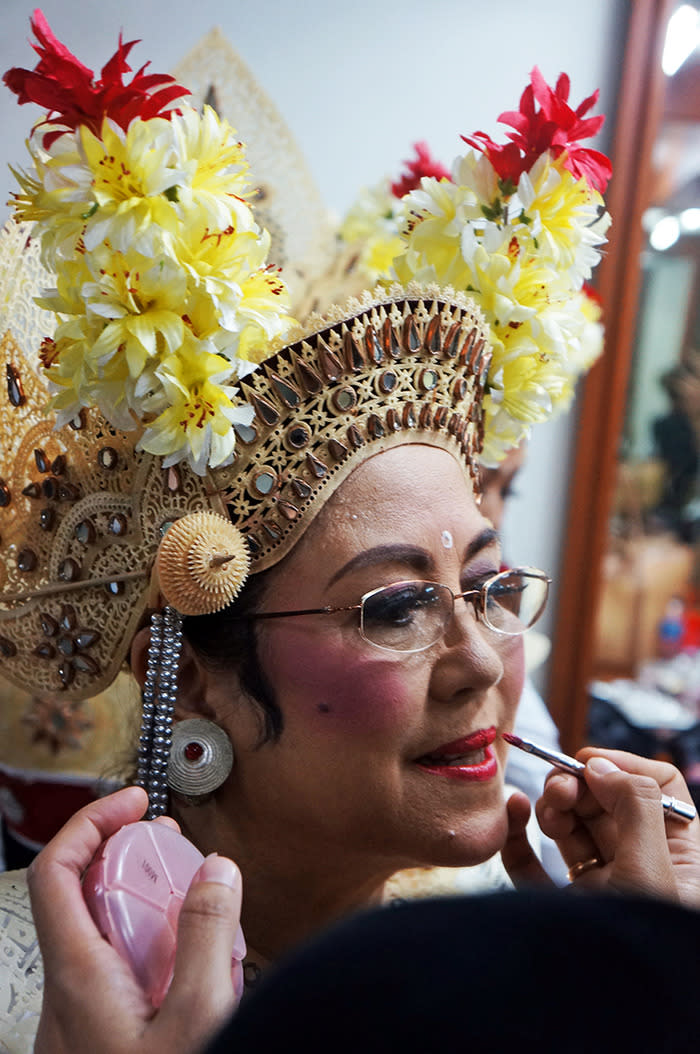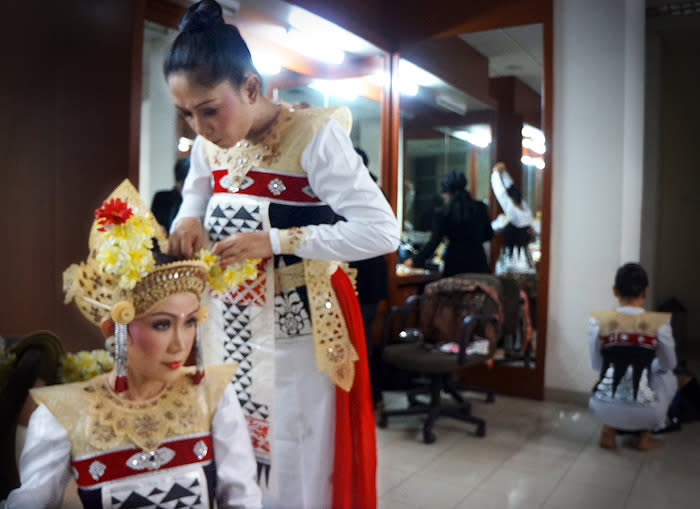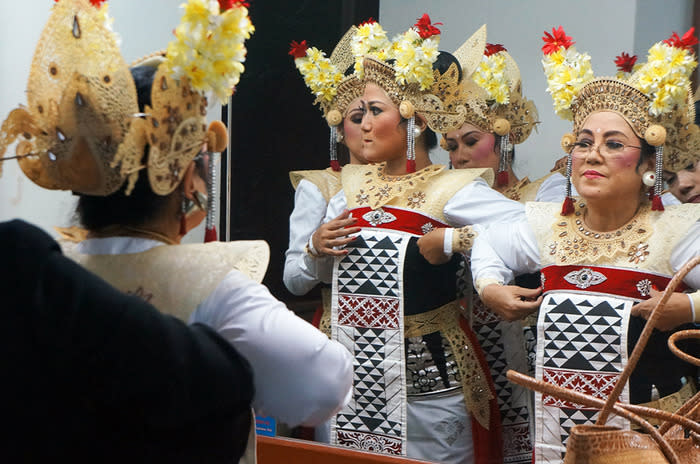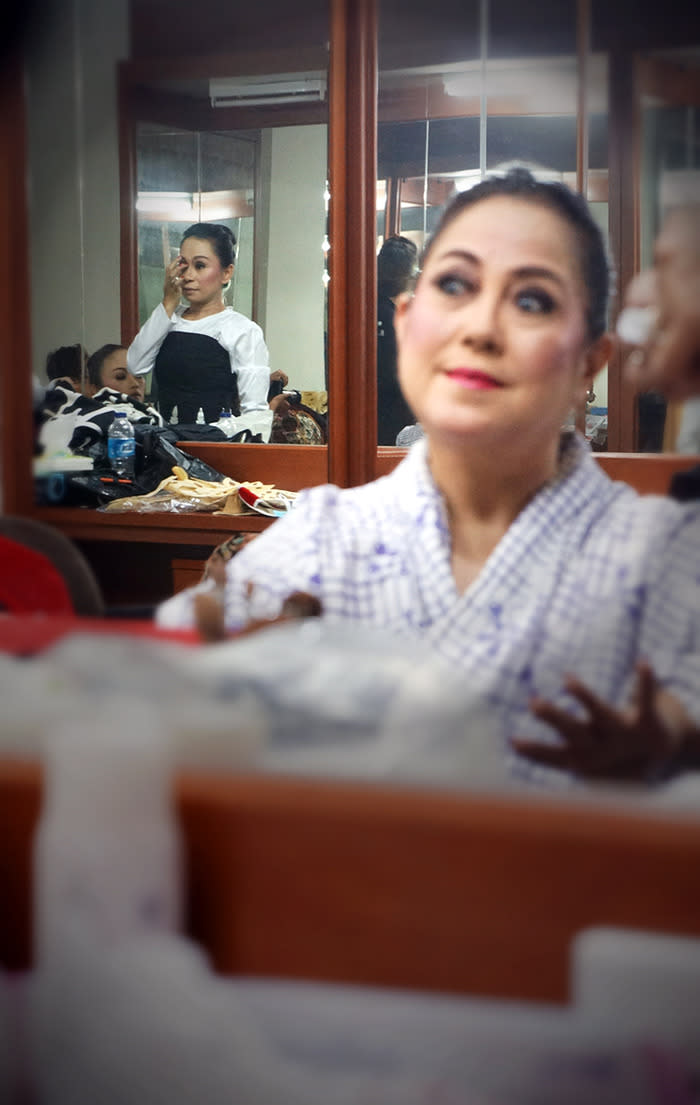Legong - Classic Tales and Modern Takes
Entering the hectic backstage area of Taman Ismail Marzuki’s playhouse in Jakarta, I was immediately greeted by the big motherly smile of Ayu Bulantrisna Djelantik.
Bulanstrina is direct descendant of the king of Karangasem in Bali, and dedicates her work to preserving, protecting and practicing the Balinese dance form known as Legong dance.
Along with her troupe, she was about to perform an amazing Bedaya-Legong piece, which is a convergence of the Legong and the Bedaya dance genre of Java.
The Bedaya-Legong performance was titled Calonarang and it was played for the occasion of The Jakarta Post’s 30th anniversary celebration last month.
All around me, dancers were busy perfecting their makeup and costumes.
The atmosphere was a combination of chaos and warmth, not unlike that of one big family getting ready on busy mornings.
“I began learning legong when I was 9 years old,” Bulantrisna, whose fellow dancers address as biang, or mother, in the Balinese language.
Now in her 60s, she still retains a youthful look; her gestures are filled with energy and elegance.
According to Bulanstrina, the legong is difficult to learn, but it is at the root of all Balinese dances.
Her passion eventually led her to establish Bengkel Tari Ayu Bulantrisna, a dance workshop dedicated for young woman interested in learning legong, in Bandung in 1994, and another was opened in Jakarta.
“I practice legong Peliatan,” Bulantrisna said referring to the region in Bali where she studied.
She shared the story of the famous Legong Keraton (Kingdom) dance that was initially brought by her grandfather, the king of Karangasem, when he visited Java and brought along dancers to perform.
Since then, the dance has been popularly referred as Legong Keraton, which means the legong dance of the kingdom.
“My legong creations are traditionally innovative. This means I keep the tradition inside the legong, such as its three parts: the opening, where it is all about aesthetics; the content, where we tell the story, and an ending,” Bulantrisna said.
“I also move forward with innovations. Then, legong was sacred, performed only in pura [temples]. Now it is a form of performing art.”
Bedaya and legong for her is as elegant and as grand as ballet is for a Russian.
Bulantrisna said there were several similarities between legong and the Javanese bedaya dance.
“Both came from a king’s dream. More than 200 years ago, a Balinese king dreamed of such a dance by angels. Bedoyo (bedaya) came from a Javanese’s sultan dream of meeting the Queen of South Seas.”
Bulantrisna said that in both legong and bedaya, women dancers could easily shift to male roles without changing costumes.
The innovation in legong can be introduced for new or old stories by changing the dancer’s stage props.
Bulantrisna said that there was even one dance company that has performed legong with a handgun as a prop.
She pointed out the legend of Calonarang, which tells of a battle bewteen magical powers, as an example.
Traditionally, the character of Calonarang is a symbol of rangda (evil), contradicting barong, which symbolizes goodness.
But her collaboration with fellow dancer and good friend, Retno Maruti produced a different take on the story.
Maruti is well-known traditional Javanese dancer. The two have known each other since they were 17, when they were performed overseas in a visiting troupe.
The Calonarang that she performed that night mixed bedaya and legong.
“This collaboration idea came from Maruti’s child, and we went through the creative process in about 1 years’ time,” Maruti, who is also an ear specialist, said.
In this collaboration, they wanted to point out the black in white, and the white in black.
“We wanted to point out that Calonarang was capable of love and compassion, and that she made her region prosper. There is more to Calonarang than an evil witch who spread the plague that killed many villagers. There is evil in goodness too, represented by the good side of Empu Baradah, who used an evil way to fight Calonarang.”
Bulantrisna said when creating more innovative legong dance forms, she always makes sure to choreograph the movements carefully, extending beyond aesthetics.
What is more important, she said, was to feel of the movements, since the dance is about spiritualism and an expression of gratitude to a higher power.
To watch the legong dance at home, go to Pura Saren in Ubud Palace and in Kerambitan. Those in Jakarta can enjoy it at Lara Djonggrang restaurant in Central Jakarta, where it is performed at least once a month.
Meanwhile, those interested in learning the art form can enroll in classes held by Bengkel Tari Ayu Bulantrisna is at Ruko Emerald Bintaro Sektor 9, Jakarta, and Ruang Kaca Taman Budaya Dago Tea House, Bandung.
Read also:
Caci, the Warrior's Whip Dance






